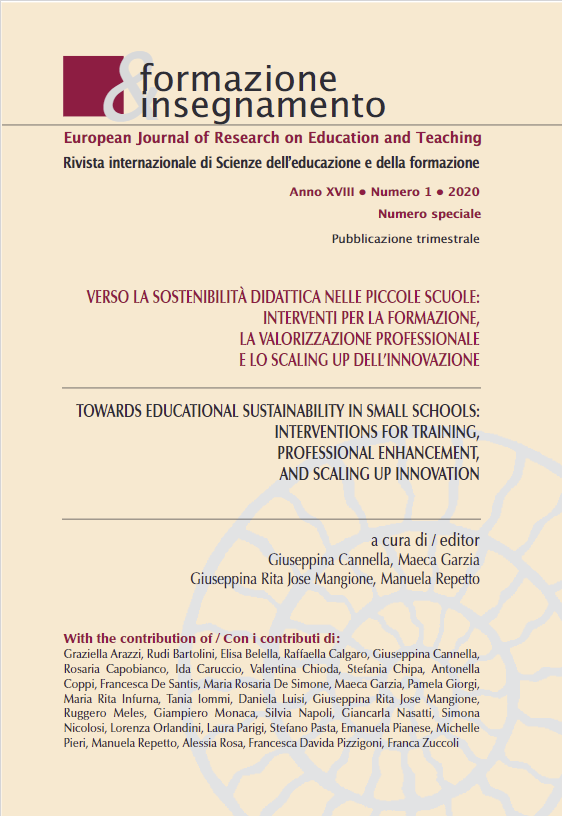Small schools in the context of the National Strategy of Internal Areas
DOI:
https://doi.org/10.7346/-feis-XVIII-01-20_05Abstract
The internal areas represent a large part of the country which, faced with a high availability of cultural and environmental resources, is characterized by phenomena of aging and population decline. These aspects determine an ever greater difficulty in the living conditions of the citizens who live there. The National Strategy for Internal Areas (SNAI) is born for the revival and development of these territories and provides for two convergent lines of action: one concerns interventions aimed at ensuring adequate levels of essential services to the population (health, education, and mobility) and another focuses on the promotion of local development in line with territorial vocations. The school represents for these territories a civic and cultural garrison of great importance, however the schools of the municipalities of the Internal Areas present problems as widespread as they are complex, with marked features of similarity from north to south. To cope with this, each area has identified diversified solutions that are consistent with the social and territorial peculiarities of their communities. This contribution presents the innovative and excellent choices that the internal area Gran Paradis (Valle d’Aosta) has decided to undertake to relaunch its territory.
Downloads
Published
How to Cite
Issue
Section
License
Copyright (c) 2020 Pensa MultiMedia

This work is licensed under a Creative Commons Attribution 4.0 International License.
Formazione & insegnamento is distributed under Attribution 4.0 International (CC BY 4.0).
For further details, please refer to our Repository & Archiving Policy, as well as our Copyright & Licensing Terms.





